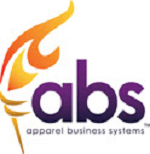Description

ABS Software

Cerm
Comprehensive Overview: ABS Software vs Cerm
ABS Software and Cerm are both specialized software solutions designed to cater to the needs of specific sectors within the manufacturing and printing industries. Below is a comprehensive overview of each, covering their primary functions, target markets, market share, user base, and key differentiating factors.
ABS Software
a) Primary Functions and Target Markets
ABS Software typically refers to Advanced Business Software solutions designed to streamline business processes. While ABS is a broad term, in this context, it can be associated with specific software solutions for sectors like manufacturing, supply chain management, and enterprise resource planning (ERP). The primary functions include:
- Process Automation: Automating repetitive tasks in manufacturing and supply chains.
- ERP Solutions: Providing comprehensive modules for finance, human resources, production, and sales.
- Supply Chain Management: Facilitating improved logistics, inventory management, and order processing.
Target Market: The target market for ABS Software solutions usually includes mid-sized to large manufacturing firms, logistics companies, and enterprises seeking to digitize and automate their business operations.
b) Market Share and User Base
ABS Software typically competes with other ERP and supply chain solutions like SAP, Oracle, and Microsoft Dynamics. The market share varies widely based on geographical regions and specific industry verticals. ABS may have a niche presence, focusing on industries like automotive, electronics, or heavy machinery manufacturing.
c) Key Differentiating Factors
- Customization: Often offers high levels of customization to suit specific industry needs.
- Integration: Strong integration capabilities with existing enterprise systems.
- Industry-specific Solutions: Tailored solutions for sectors like manufacturing and logistics.
Cerm
a) Primary Functions and Target Markets
Cerm is a specialized software solution designed for the print industry, particularly focusing on labels and packaging. Cerm software's primary functions include:
- MIS (Management Information Systems): Providing an end-to-end solution tailored for the print industry.
- Print Production Management: Streamlining the planning, scheduling, and management of print jobs.
- Automation: Automating administrative processes to boost efficiency in print production.
Target Market: Cerm targets the label and packaging market within the broader printing industry. Its focus is mainly on small to medium-sized enterprises (SMEs) within this niche.
b) Market Share and User Base
Within the label and packaging segment, Cerm has a robust presence. Its market share can be significant among SMEs in the print industry compared to more generalized MIS solutions. However, compared to giants like EFI, which offer broader solutions for the entire print industry, Cerm's market share could be more niche.
c) Key Differentiating Factors
- Industry Focused: Completely tailored for the label and packaging industry, providing specialized functions that broader MIS systems might not offer.
- User-Friendly Interface: Designed with the specific needs and workflows of print professionals in mind, making it easier to adopt and use.
- Robust Production Tools: Offers deep production management features that sync well with modern digital and flexographic printing technologies.
Comparison and Conclusion
While both ABS Software (in the ERP and supply chain space) and Cerm (in the print industry) serve automation and business optimization functions, they cater to highly distinct industries and business needs. ABS Software typically has a broader application scope with possibly a larger user base due to its applicability across multiple industries. In comparison, Cerm serves a very niche market but excels in providing specialized solutions tailored for that industry. The choice between these solutions largely depends on the specific business requirements, with ABS as part of larger ERP implementations and Cerm specifically for print production efficiency.
Contact Info

Year founded :
Not Available
Not Available
Not Available
Australia
http://www.linkedin.com/company/abs-software

Year founded :
1999
+1 207-626-8301
Not Available
United States
http://www.linkedin.com/company/consortium-for-environmental-risk-management
Feature Similarity Breakdown: ABS Software, Cerm
Comparing ABS Software and Cerm involves evaluating their core features, user interfaces, and any unique characteristics that distinguish one product from the other. Both are prominent in the realm of software solutions for specific industries, such as manufacturing or printing, but they may serve slightly different niches or customer needs.
a) Core Features in Common
-
Resource Planning and Management
- Both ABS Software and Cerm provide comprehensive resource management tools that include production scheduling, inventory management, and workforce planning, enabling businesses to optimize their operations efficiently.
-
Order and Job Management
- They offer robust job management features which allow users to create, track, and manage orders seamlessly throughout the production lifecycle.
-
Cost Estimation and Quoting
- Both platforms deliver accurate cost estimation and quoting capabilities, vital for generating precise proposals that align with customer requirements and cost structures.
-
Reporting and Analytics
- Detailed reporting and analytics tools are available in both, helping businesses generate insights into operational efficiencies, performance metrics, and financial summaries.
-
Integration Capabilities
- ABS Software and Cerm allow integration with various third-party applications and hardware, supporting a seamless workflow throughout different organizational systems.
b) User Interface Comparison
-
ABS Software User Interface
- Generally known for a traditional approach, the ABS Software UI is functional, emphasizes ease of use, and prioritizes navigation efficiency. It likely targets users looking for straightforward solutions without a steep learning curve.
-
Cerm User Interface
- Cerm tends to focus on an industry-specific and intuitive design, often tailored for the printing and label production sectors. It provides a visually engaging experience, often with dashboards and widgets that can be customized to fit operational needs.
c) Unique Features
-
ABS Software Unique Features
- Customization Options: ABS Software often offers a higher degree of customization suited for varied manufacturing environments, allowing clients to mold the system closely with their workflows.
- Manufacturing Specific Modules: It may provide modules specifically for different types of production beyond printing, catering to a broader manufacturing audience.
-
Cerm Unique Features
- Print Industry Focused Tools: Cerm is specifically known for its features designed for the printing industry, such as label and packaging design capabilities, print production workflow management, and color management tools.
- JDF/JMF Connectivity: Offers advanced connectivity with Job Definition Format (JDF) and Job Messaging Format (JMF) for seamless communications between different systems in print production.
In summary, while both ABS Software and Cerm provide robust solutions for manufacturing and production management, they cater to different aspects of industry needs. ABS Software might offer more flexibility across various manufacturing realms, whereas Cerm presents specialized tools that deeply integrate with printing production processes. The choice between them would largely depend on the specific operational requirements and industry focus of the user.
Features

Project Collaboration
Integration and API
User Management
Analytics and Reporting

Reporting and Analytics
Client Management
Project Management
Financial Management
Customer Relationship Management
Resource Management
Collaboration Tools
Best Fit Use Cases: ABS Software, Cerm
ABS Software and Cerm serve different market needs and are tailored to specific industry requirements. To understand their best-fit use cases, it's essential to examine the types of businesses or projects they are designed for and how they accommodate varying industry verticals and company sizes.
ABS Software
ABS Software is typically associated with marine or maritime industries, focusing on solutions like vessel management, compliance, and performance optimization. Here's how it stands out:
a) Best Fit Use Cases for ABS Software:
- Shipping Companies: ABS Software is ideal for businesses operating large fleets, providing tools for managing vessel performance, ensuring regulatory compliance, and optimizing maintenance routines.
- Offshore and Oil & Gas: Companies involved in offshore drilling, exploration, and logistics can benefit from ABS solutions with their focus on safety and regulatory compliance tailored to harsh marine environments.
- Maritime Consultancies: Firms offering consultancy services in maritime compliance, safety audits, and performance improvements can leverage ABS Software for comprehensive reporting and analysis tools.
- Naval Architecture and Marine Engineering Firms: Businesses that design and construct vessels can use ABS tools for compliance checks and structural assessments.
Cerm
Cerm is known for its strengths in the label and narrow web printing industry. It offers specialized solutions for print shop management, focusing on the unique needs of this niche market.
b) Best Fit Use Cases for Cerm:
- Label Printing Companies: If a business specializes in label production, Cerm provides end-to-end solutions from order management to production and delivery.
- Narrow Web and Packaging: Businesses that need to manage the complexities of narrow web and flexible packaging can benefit from Cerm's specific features aimed at streamlining production workflows.
- Print Industry Suppliers: Companies supplying consumables or machinery to print shops can use Cerm’s tools for supply chain management and customer relationship management.
d) Catering to Different Industry Verticals or Company Sizes
ABS Software
- Industry Vertical Focus: Primarily serves the maritime sector, including shipping, offshore, and naval architecture. Its features ensure compliance with maritime regulations and enhance safety and performance.
- Company Size: While adaptable to various sizes, ABS Software is particularly beneficial to medium to large enterprises with complex fleet operations due to its comprehensive suite of tools and features.
Cerm
- Industry Vertical Focus: Targets the print industry, particularly label and narrow web sectors. Cerm provides tailored solutions for the unique production and business management challenges in this space.
- Company Size: Cerm is best suited for small to medium-sized enterprises that need integrated solutions for managing print operations, though it can scale to larger operations looking to automate and optimize workflows.
In summary, ABS Software and Cerm cater to niche markets with specialized requirements. ABS is optimal for maritime-focused businesses, whereas Cerm excels in serving the label and narrow web printing industry. Both provide scalability and are designed to meet the specific needs of their respective industries, ensuring compliance, efficiency, and profitability.
Pricing

Pricing Not Available

Pricing Not Available
Metrics History
Metrics History
Comparing teamSize across companies
Conclusion & Final Verdict: ABS Software vs Cerm
When evaluating ABS Software and Cerm, it's important to consider a variety of factors such as functionality, cost, ease of use, customer support, integration capabilities, and industry-specific needs. Here's a conclusion and final verdict based on these considerations:
a) Best Overall Value:
Determining the "best overall value" between ABS Software and Cerm depends heavily on the specific needs of the user or organization.
- Cerm offers significant advantages for businesses in the narrow-web label printing industry due to its specialized features and strong industry focus. It provides tailored modules for process optimization and effiiciency improvements.
- ABS Software generally provides powerful customization options and may serve broader industries, making it ideal for businesses that require diverse functionality.
For niche, industry-specific requirements, Cerm offers the best overall value. For more generalized use with flexibility in various sectors, ABS Software might present a better value.
b) Pros and Cons:
ABS Software:
- Pros:
- Wide range of customizable features
- Versatile enough for multiple industries
- Strong integration capabilities
- Cons:
- Steeper learning curve due to customizability
- May require more time for implementation
- Potentially higher initial costs with customization
Cerm:
- Pros:
- Highly specialized and efficient for the narrow-web label industry
- Intuitive interface for users in its niche
- Streamlined modules for specific tasks
- Cons:
- May not offer the flexibility needed for broader applications
- Potential limitations outside its target industry
- Less adaptability if business diverges from industry specifications
c) Recommendations:
-
Industry Alignment: If your business is heavily centered on the narrow-web label market, Cerm is likely to be the more appropriate choice due to its specialized features and ease of application within that sector.
-
Customization Needs: For businesses requiring extensive customization and operations across multiple industries, ABS Software may provide better long-term benefits due to its flexibility and broad functionality.
-
Implementation and Future Needs: Consider the scalability of each software. If planning for significant business growth or diversification, assess which software can accommodate changes with minimal disruption.
-
Cost vs. Benefit Analysis: Conduct a thorough cost analysis including initial deployment and long-term operational costs. Also, consider potential benefits in terms of efficiency gains and how they align with your strategic goals.
-
User Feedback and Trials: Engage with user feedback from current users of both products and leverage trial opportunities when available to assess firsthand how each product aligns with your operational needs.
By focusing on these factors, businesses can make a more informed decision between ABS Software and Cerm, selecting a product that truly aligns with their operational and strategic objectives.




